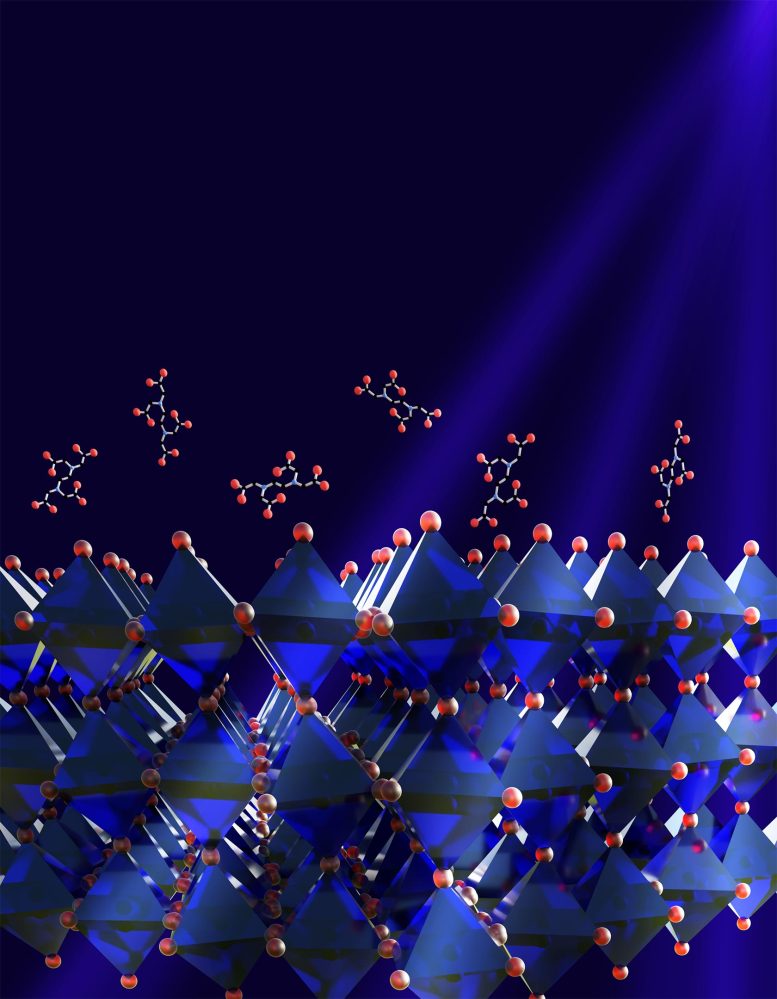
Researchers have developed a method to stabilize a promising material known as perovskite for cheap solar cells, without compromising its near-perfect performance. Credit: University of Cambridge
Researchers have developed a method to stabilize a promising material known as perovskite for cheap solar cells, without compromising its near-perfect performance.
The researchers, from the University of Cambridge, used an organic molecule as a ‘template’ to guide perovskite films into the desired phase as they form. Their results are reported in the journal Science.
Perovskite materials offer a cheaper alternative to silicon for producing optoelectronic devices such as solar cells and LEDs.
There are many different perovskites, resulting from different combinations of elements, but one of the most promising to emerge in recent years is the formamidinium (FA)-based FAPbI3 crystal.
The compound is thermally stable and its inherent ‘bandgap’ – the property most closely linked to the energy output of the device – is not far off ideal for photovoltaic applications.
For these reasons, it has been the focus of efforts to develop commercially available perovskite solar cells. However, the compound can exist in two slightly different phases, with one phase leading to excellent photovoltaic performance, and the other resulting in very little energy output.
“A big problem with FAPbI3 is that the phase that you want is only stable at temperatures above 150 degrees